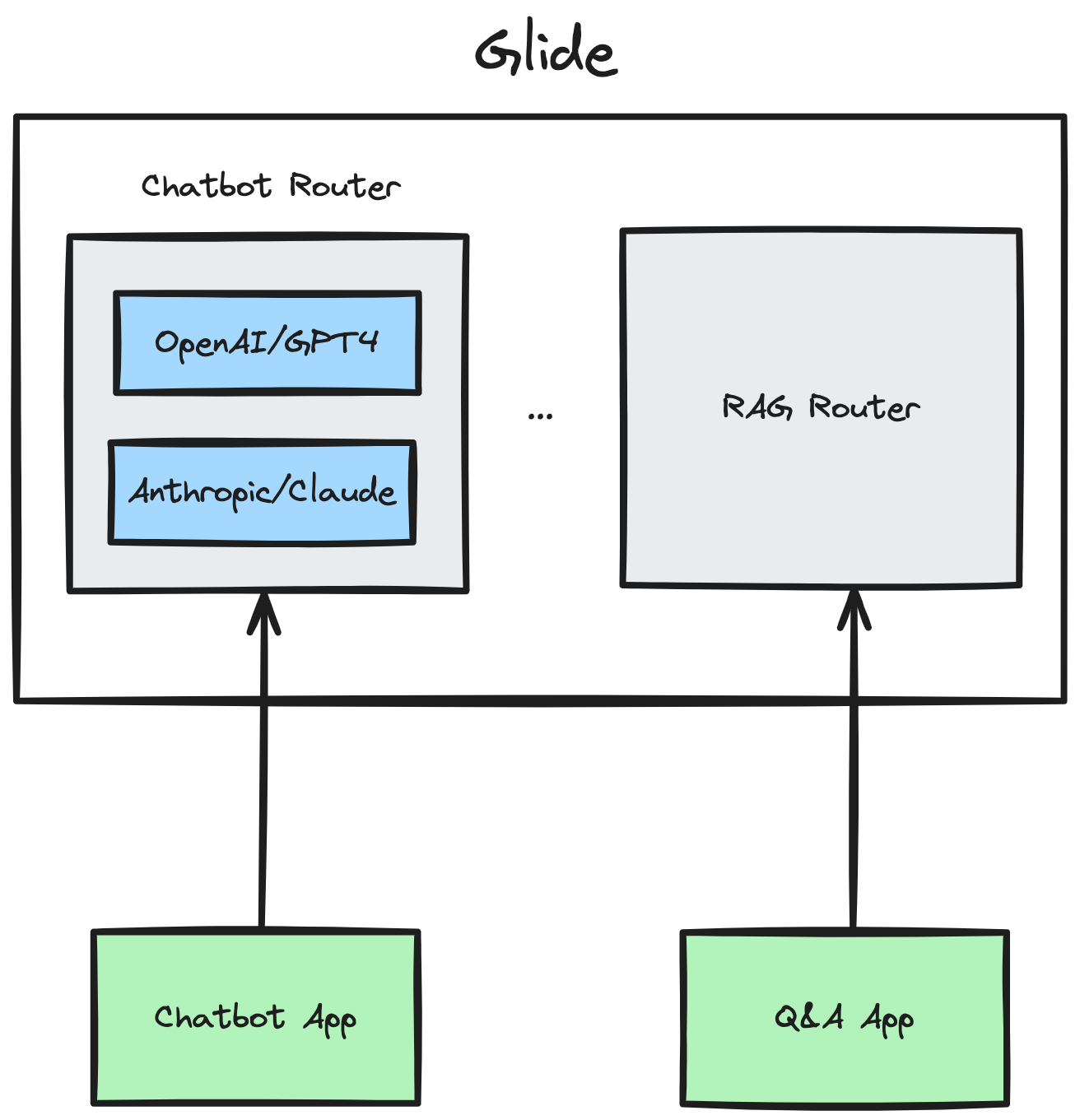Concepts
Glide is a gateway that stands between your applications and external model to seamlessly solve for you common cross-cutting concerns like high availability.
Providers
Providers are resources that provide large language models with different capabilities (e.g. text-to-text, speech, etc.) like OpenAI, Cohere, etc.
Routers
Glide can be seen as a set of routers. The router is a flexible abstraction that helps to tune Glide to your specific use cases.

Each router consists of a pool of models (e.g text-to-text, text-to-speech, speech-to-text, etc.). The router uses the specified strategy to define which model from the pool should serve the next request.
Besides models, it's possible to enable and configure other functionality on the router level like caching. So in the end, the router is configured in the way that the specific use case requires.
At the same time, since you can have multiple routers in one Glide cluster, one Glide installation could support multiple diverse applications with totally different needs.
All router strategies Glide supports are designed with resiliency in mind. So they do fallbacks (when a pool consists of more than one model) and model health tracking automatically.
Unified API
Glide serves as an abstraction around all external models your applications use. This has the number of upsides:
- Applications talk to Glide and there is no need for them to know what models exactly you are using under the curtain. In turn, this simplifies and streamlines model switching and new model adoption.
- There is no need for applications to know or manage all API keys. Glide serves as a centralized place to manage and rotate them all.
- Glide unifies model responses keeping your code cleaner
Glide's API doesn't look like any specific model response, however, it does have similar semantics.
Declarative Configuration
Glide comes with a declarative YAML configuration that helps you to define all aspects of its work in one single human-readable and auditable format.
Glide allows you to pass secrets like API keys in multiple ways via environment variables and files.